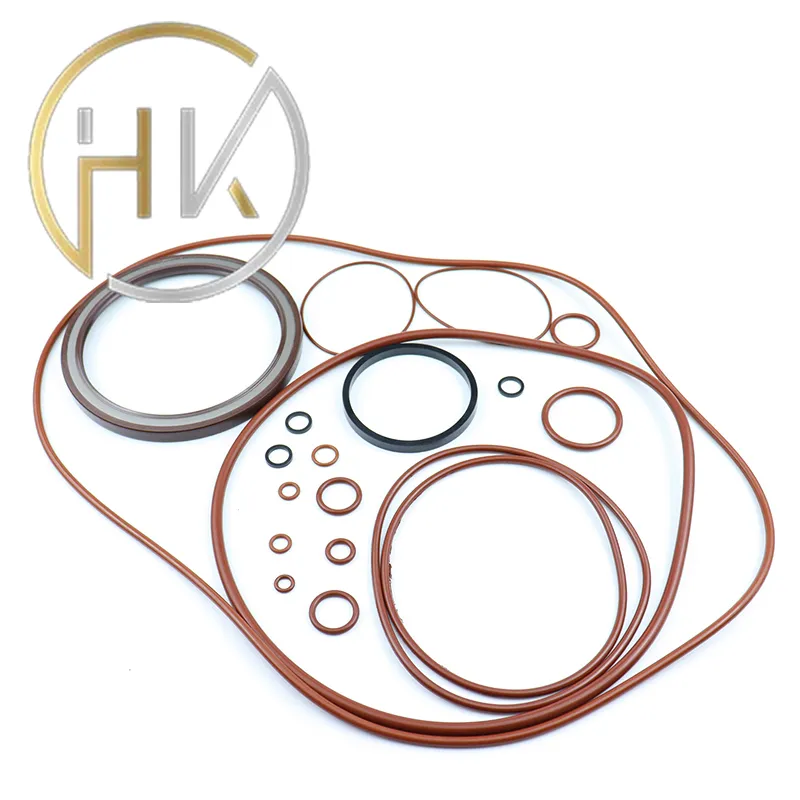Nov . 05, 2024 12:40 Back to list
rear wheel hub seal
Understanding Rear Wheel Hub Seals Importance and Maintenance
The rear wheel hub seal is a crucial component commonly found in vehicles, providing essential protection and functionality to the wheel assembly. This integral part plays a significant role in ensuring the smooth operation of the vehicle's drivetrain while preventing costly damage. In this article, we will explore the functions, common issues, and maintenance tips related to rear wheel hub seals.
Function of Rear Wheel Hub Seals
The primary function of a rear wheel hub seal is to keep the lubrication within the hub assembly while preventing dirt, moisture, and contaminants from entering. The seal acts as a barrier between the internal components, including bearings and gears, and the external environment. By maintaining a proper seal, the lubricant inside the hub can effectively reduce friction, allowing for smoother operation and extending the lifespan of the bearings.
Additionally, the rear wheel hub seal plays a vital role in preserving the structural integrity of the rear axle and wheel assembly. When the seal functions correctly, it helps maintain the right amount of lubricant, preventing overheating and wear. This, in turn, contributes to the overall safety and performance of the vehicle.
Common Issues with Rear Wheel Hub Seals
Despite their importance, rear wheel hub seals can encounter several issues over time
. One of the most common problems is wear and tear due to age or exposure to extreme conditions. Environmental factors, such as dirt, water, and high temperatures, can cause the seals to degrade, leading to leakage of the lubricant. This can result in insufficient lubrication of the bearings, leading to accelerated wear and potential failure.Another common issue is improper installation. If a rear wheel hub seal is not installed correctly, it may not create an effective barrier, which can lead to premature failure. Similarly, using the wrong type of seal for a specific vehicle model can also result in malfunctions.
Symptoms of a Failing Rear Wheel Hub Seal
rear wheel hub seal

It is crucial for vehicle owners to recognize the symptoms of a failing rear wheel hub seal. One of the most apparent signs is visible leakage of lubricant around the wheel hub. Drivers may notice oil spots or a greasy residue near the wheels, which can indicate a compromised seal.
Additionally, unusual noises such as grinding or humming when the vehicle is in motion may signal trouble with the hub assembly. These sounds are often indicative of insufficient lubrication, causing the bearings to work harder than they should. If left unaddressed, this can lead to component failure, resulting in more extensive and expensive repairs.
Maintenance and Replacement
To ensure optimal performance of the rear wheel hub seal, routine maintenance is essential. Regular inspections can help identify any signs of wear or leakage early on. If the seal is found to be damaged, it is important to replace it promptly to prevent further complications.
When replacing a rear wheel hub seal, it is vital to choose high-quality components that are compatible with the vehicle. Following the manufacturer's specifications regarding installation is also crucial to ensure the seal will function correctly. In some cases, it may be advisable to have a professional perform the replacement, particularly if the task requires specific tools or expertise.
Additionally, maintaining proper lubrication in the hub assembly can help prolong the life of the seal and the overall wheel assembly. Regular checks of the lubricant level and quality are essential to ensure smooth operation.
Conclusion
The rear wheel hub seal is a small but significant component of any vehicle's wheel assembly. It serves as a protective barrier, ensuring that the internal components remain lubricated and free from contaminants. Understanding its functions, recognizing potential issues, and performing regular maintenance can help prevent costly repairs and ensure a safe driving experience. By paying attention to this crucial element of your vehicle, you can contribute to its longevity and performance on the road.
-
TCN Oil Seal Metal Ring Reinforcement for Heavy Machinery
NewsJul.25,2025
-
Rotary Lip Seal Spring-Loaded Design for High-Speed Applications
NewsJul.25,2025
-
Hydraulic Cylinder Seals Polyurethane Material for High-Impact Jobs
NewsJul.25,2025
-
High Pressure Oil Seal Polyurethane Coating Wear Resistance
NewsJul.25,2025
-
Dust Proof Seal Double Lip Design for Construction Equipment
NewsJul.25,2025
-
Hub Seal Polyurethane Wear Resistance in Agricultural Vehicles
NewsJul.25,2025
-
The Trans-formative Journey of Wheel Hub Oil Seals
NewsJun.06,2025
Products categories
















